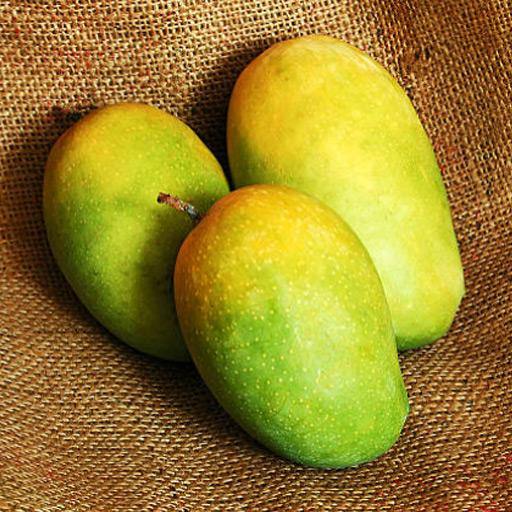For mango enthusiasts, the year isn't measured in ordinary months but in mango seasons. Understanding the seasonal rhythms of premium Gir Kesar mangoes helps you anticipate, plan, and fully appreciate these golden treasures during their brief window of availability. This comprehensive guide will walk you through the seasonal journey of Kesar mangoes from blossom to harvest and delivery.
The Annual Cycle of Kesar Mangoes
Unlike some fruits available year-round, premium mangoes follow nature's strict calendar. For Gir Kesar mangoes, this cycle is particularly defined and contributes significantly to their quality and value.
Pre-Season (November-January): The Foundation
While consumers rarely think about mangoes during winter months, this period is crucial for the upcoming season:
- November: Trees rest after the previous season
- December: Flower buds begin to form
- January: Blossoming begins, with white flowers appearing on the trees
During this period, the weather conditions in the Gir region play a critical role in determining the quality and quantity of the upcoming harvest. Ideal conditions include moderate temperatures, minimal unseasonal rain, and gradual cooling that promotes proper flower development.
Early Development (February-March): The Waiting Phase
- February: Flowers are pollinated and tiny fruits begin to form
- March: Young mangoes develop, growing from marble-size to small fruit
This period represents the first indication of the season's potential. Farmers closely monitor:
- Fruit set rates (how many flowers successfully develop into fruit)
- Early fruit drop patterns
- Pest and disease pressure
- Weather patterns that might affect development
Pre-Harvest (April): The Anticipation Period
- Early April: Fruits reach mature size but remain green
- Mid-April: The first color changes begin in early varieties
- Late April: The earliest Kesar mangoes may be harvested
This is when experienced mango farmers make critical decisions about harvest timing. Picking too early results in mangoes that never develop proper flavor and aroma, while waiting too long risks overripening on the tree.
Prime Season (May): The Golden Month
May is the heart of the Gir Kesar season:
- Early May: First premium harvests reach markets
- Mid-May: Peak quality and quantity availability
- Late May: Continued excellent quality with fully developed flavor profiles
This is when Kesar mangoes express their full character, with optimal sugar development, aromatic complexity, and the signature saffron-colored flesh. Pre-orders placed well in advance are fulfilled during this golden window, and this is when the most discerning mango lovers anticipate their annual mango experience.
Late Season (June): The Final Opportunity
- Early June: Good quality mangoes still available
- Mid-June: Quality becomes more variable
- Late June: Season winds down with final harvests
Late-season mangoes can still offer excellent quality, though availability becomes more limited. Experienced growers can often extend the season slightly through careful orchard management and selective harvesting.
Off-Season (July-October): The Planning Period
While fresh Gir Kesar mangoes aren't available during these months, this is when:
- Farmers conduct post-harvest orchard maintenance
- Trees recover and prepare for the next flowering cycle
- Forward-thinking consumers sign up for early notifications for the following season
Factors Affecting Seasonal Timing
The exact timing of the Kesar mango season can shift slightly each year based on several factors:
Climate Variations
- Winter temperatures: Warmer winters can advance flowering
- Spring rainfall patterns: Excessive spring rain can delay harvesting
- Heat waves: Unusually hot periods can accelerate ripening
Geographic Microclimate
Even within the Gir region, slight variations occur based on:
- Elevation differences
- Proximity to water bodies
- Orientation of slopes (north vs. south-facing)
Cultivation Practices
Expert growers can influence timing through:
- Irrigation management
- Nutrient application timing
- Canopy management techniques
The Premium Window: When Kesar Truly Shines
While the technical season spans several weeks, the period when Kesar mangoes express their absolute finest characteristics is notably shorter:
The Golden Window: May 10-30
During these few precious weeks, the perfect alignment of sugar development, acid balance, aromatic compound synthesis, and textural changes creates the quintessential Kesar experience. This is when:
- Sweetness reaches its peak without becoming cloying
- Aroma compounds are most concentrated
- The signature saffron color is fully developed
- Flesh texture achieves the perfect balance of firmness and melting quality
Planning Your Mango Calendar
For the mango enthusiast determined to experience the best of Gir Kesar, consider this timeline:
- March: Begin researching suppliers and sign up for pre-order notifications
- Early April: Place pre-orders with premium suppliers like AamKesari
- Late April: Prepare for the season by learning about proper ripening techniques
- May: Enjoy the peak season experience
- June: Consider ordering final batches before the season ends
- Post-season: Explore preserved mango products to extend the experience
Regional Variations Across India
While this guide focuses on Gir Kesar mangoes, it's worth noting how the broader mango calendar unfolds across India:
- March-April: Early varieties like Banganapalli appear in southern states
- April-May: Alphonso season peaks in Maharashtra
- May-June: Kesar dominates in Gujarat
- June-July: Northern varieties like Chausa and Langra take center stage
- July-August: Late varieties conclude the national mango season
This progression creates a "mango wave" that moves roughly from south to north across the subcontinent.
Climate Change and Seasonal Shifts
In recent years, growers and consumers have observed subtle but important changes to the traditional mango calendar:
- Earlier flowering in some years
- More variable fruit set
- Occasionally compressed harvest windows
- Increased weather unpredictability
These changes make establishing relationships with knowledgeable suppliers even more important, as they can navigate seasonal variations and still deliver premium fruit during the optimal window.
The AamKesari Difference: Timing Expertise
At AamKesari, we've developed deep expertise in navigating the seasonal nuances of Gir Kesar mangoes:
- Working with farmers who harvest at precisely the right moment
- Monitoring orchard conditions throughout the year
- Understanding microclimate variations
- Implementing a queue system that ensures fair allocation during peak periods
- Communicating transparently about seasonal progression
Our pre-order system is designed specifically around the natural rhythm of the mango season, ensuring you receive your mangoes at their absolute peak.
Conclusion: Embracing Seasonality
In a world where many fruits are available year-round, the strict seasonality of premium Gir Kesar mangoes might seem limiting. However, this limited availability is precisely what makes the experience so special – a annual moment of perfection that can't be rushed or extended beyond nature's timeline.
By understanding the mango calendar and planning accordingly, you transform seasonality from a limitation into an opportunity for anticipation and appreciation of one of nature's most perfect creations.
The next Gir Kesar season will be here before you know it. Sign up for AamKesari's pre-order notifications today to secure your place in the queue for India's finest mangoes at their seasonal peak.





